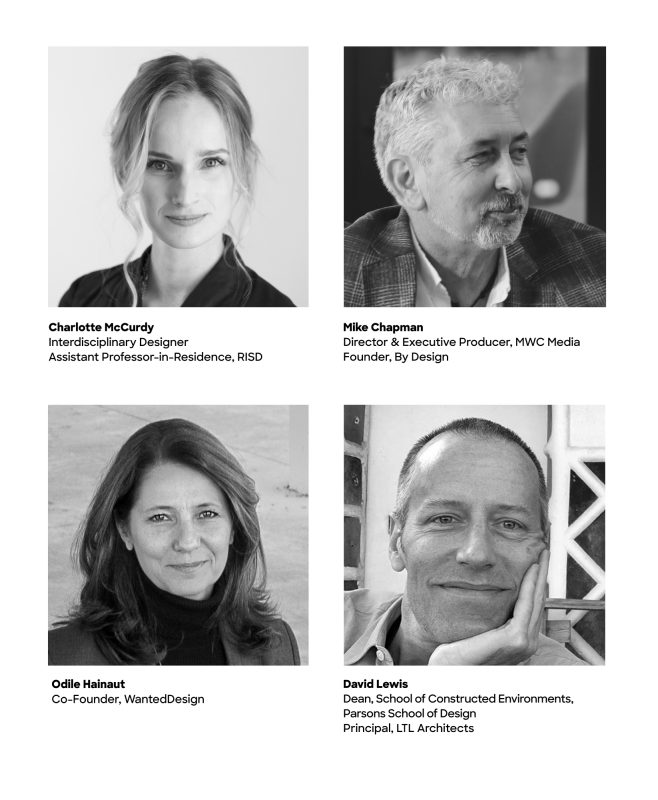Many of the materials used in art and design are harmful to people and to the planet. Designers and artists can make enormous contributions to global health and culture through their decisions about materials, methods, and social engagement.
Are you thinking about the impact of climate change through your design actions? Are you considering how your work impacts the planet at large? Are you innovating with healthier materials? Are you passionate about making your designs inclusive? The impacts of your design decisions are far-reaching, indisputable, and can be transformative.
This contest looks for innovations in design and use of materials that have a positive impact on the global environment and society.
Does your work exemplify healthy material innovation and advocacy in design?
How are Winners Chosen?
Winning entries are selected that exemplify innovation, use of healthy materials and/or healthy strategies and/or advocate for social justice through design. Projects of all types, including speculative, proposed, and real, are eligible. We encourage entries to include models, prototypes, artwork, or visual media.
Requirements include documentation of the design process through pictures, drawings, or short videos, and an annotated life-cycle diagram summarizing the carbon impact of your design in order to understand how your design responds to the current global climate emergency.
ELIGIBILITY
Students currently enrolled in an undergraduate or graduate degree-seeking design program are eligible to enter. This includes students in all disciplines and continents. Group submissions are also accepted.
$1,000 cash prize and social media coverage
SUBMISSION REQUIREMENTS:
We accept in-process and digital models (that might have been made in your kitchen) and/or any other evidence to support your final concept.
First and last name (If this is a group submission, please enter first and last names separated by a comma of all team members)
Name and location of your University
Name of your academic program
Name of faculty advisor
Project title
Description of your motivation or inspiration (100 word limit)
Description of your process (100 word limit)
Description of market viability if applicable (100 word limit)
Description of all materials used, including any coatings and/or adhesives; plus evidence to support any claims of healthier materials (Why is your material innovation healthier?) (500 word limit)
Annotation of this diagram to reflect the lifecycle of your design. Consider the impact on human and environmental health at every stage.
At least 3 final project images (under 1MB). All images must be high resolution.
A maximum of 7 supporting images, videos, drawings and/or other means of demonstrating your process. All images must be high resolution.
SUBMISSION DEADLINE: Monday May 23, 2022
JUDGING CRITERIA:
Clear argument for positive human health impacts and environmental benefits: Record evidence to support claims of healthier materials.
Clear Motivation for Material Choices: Are the materials chosen because they are healthier alternatives to commonly used materials? Are the materials salvaged, recycled, or reused - closing the loop of their life cycle? Are they sourced locally or from sources that lower a typical carbon footprint?
Demonstration of Innovation and Future Thinking: Give details of your design process, describing why you made the choices that you did.
Demonstration of Carbon Impact: How well does your annotated diagram address planetary and human health at every stage of the product’s life-cycle? Do your design decisions reduce the impacts of carbon emissions and therefore slow down climate change?
Compelling Aesthetics: This is a design project. Considering health, the environment, and local and global ecologies improves creative design work. Your creative, healthy, and sustainable strategies should be communicated through equally beautiful models, prototypes, and/or physical design proposals. We look forward to seeing radical innovation that will proliferate, which depends upon unique and compelling aesthetics.
A Few Tips:
Use mechanical joinery or fasteners instead of glues or adhesives
Avoid potential toxics, including VOCs, flame retardants, stain repellent coatings, etc.
Use natural, salvaged, or recycled materials.
ANNOUNCING OUR EXPERT JUDGES :



LINKS TO ADDITIONAL INFORMATION AND RESOURCES:
For additional information and resources, visit our Tools and Guides or Material Collections.
For more information contact:
healthymaterialslab@newschool.edu
Personal information collected from this form will only be used for the purposes of this contest and will be deleted after the contest winners are announced.
Read More
Join Our Academic Network
Get Access to our carefully researched and curated academic resources, including model syllabi and webinars. An email from an academic institution or a .edu email address is required. If your academic institution does not use .edu email addresses but you would like to join the network, please contact healthymaterialslab@newschool.edu.
Already have an account? Log in